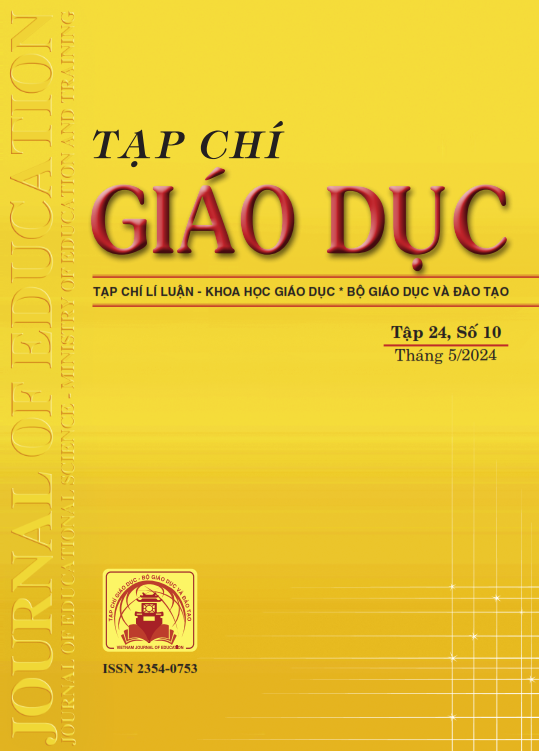Kết nối toán học giữa đạo hàm và tích phân trong dạy học giải quyết các vấn đề thực tế
Tóm tắt
In teaching Mathematics, students need to develop the ability to connect mathematics to understand mathematics, especially with abstract mathematical concepts such as derivatives and integrals. Through modeling real-life situations, students can connect mathematics to reality, as well as connect mathematical knowledge with each other. This study uses experimental methods to verify the effects of lesson plans on students' ability to make mathematical connections between derivatives and integrals in teaching real-life problem solving. The research was conducted on 42 students of class 12A2, Hai Ba Trung High School, Hue City in the first semester of the 2023-2024 school year. The results of the initial research show that teaching integral content by focusing on the mathematical connection between derivatives and integrals through solving different real-life situations helped the students improve their ability to make mathematical connections between derivatives and integrals, as well as between mathematics and reality.
Tài liệu tham khảo
Berry, J., & Nyman, M. (2003). Promoting students’ graphical understanding of the calculus. The Journal of Mathematical Behavior, 22(4), 479-495.
Blum, W., Galbraith, P.L., Henn, H.-W., & Niss, M. (Eds.) (2007). Modelling and Applications in Mathematics Education: The 14th ICMI Study. New York, NY: Springer.
Cai, J., & Ding, M. (2015). On mathematical understanding: perspectives of experienced Chinese mathematics teachers. Journal of Mathematics Teachers Education, 18(5), 1-25.
Garcia-Garcia, J., & Dolores-Flores, C. (2018). Intra-mathematical connections made by high school students in performing Calculus tasks. International Journal of Mathematical Education in Science and Technology, 49(2), 227-252.
Hiebert, J., & Carpenter, T. (1992). Learning and teaching with understanding. In D. Grouws (Ed.), Handbook of research on mathematics teaching and learning (pp. 65-79). New York, NY: Macmillan.
Hiebert, J., & Wearne, D. (2004). Developing understanding through problem solving. In H. Schoen (Ed.), Teaching Mathematics through Problem Solving (pp. 3-13), Reston, VA: NCTM.
Julie, C., & Mudaly, V. (2007). Mathematical modelling of social issues in school mathematics in south Africa. In Blum, W., Galbraith, P. L., Henn, H. W., & Niss, M.(Eds.). Modelling and applications in mathematics education, ICMI 14 (pp. 503-510). Springer Science & Business Media.
Leinwand, S. (2014). Principles to actions: Ensuring mathematical success for all. National Council of Teachers of Mathematics, Incorporated.
National Council of Teachers of Mathematics (NCTM) (2000). Principles and Standards for School Mathematics. Reston, VA: National Council of Teachers of Mathematics.
Niss, M., & Blum, W. (2020). The learning and teaching of mathematical modelling. Routledge.
Stylianides, A. J., & Stylianides, G. J. (2007). Learning mathematics with understanding: A critical consideration of the learning principle in the principles and standards for school mathematics. The Montana Mathematics Enthusiast, 4(1), 103-114.
Walle, J. A. V. D. (2007). Elementary and Middle School Mathematics Teaching Developmentally. Boston: Allyn & Bacon.
Tải xuống
Đã Xuất bản
Cách trích dẫn
Số
Chuyên mục
Giấy phép

Tác phẩm này được cấp phép theo Ghi nhận tác giả của Creative Commons Giấy phép quốc tế 4.0 .












